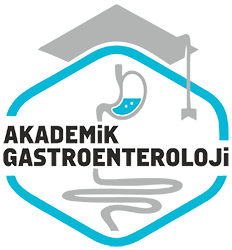Agustos 2010
Malign biliyer darliklarda sitoloji firçasinin santrifüj suyunun incelenmesinin yaymaya katkisi
Contribution of examination of cytology brush wash to brush smear in malignant biliary strictures
- Ana Sayfa
- Sayılar
- Agustos 2010
- Malign biliyer darliklarda sitoloji firçasinin santrifüj suyunun incelenmesinin yaymaya katkisi...
Özet
Giriş ve Amaç: Malign biliyer darliklar heterojen bir grup hastalık tarafindan olusturulur. Endoskopik retrograd kolanjiopankreatografi bu hastalıkların tanısı ve tedavisinin yönlendirilmesinde son 20 yıldir yaygın olarak kullanılmaktadır. Malign darlik süphesi olduğunda endoskopik retrograd kolanjiopankreatografi ile firça sitolojisi yapilarak histopatolojik doku tanısına ulasilabilmektedir. Malign biliyer darliklarda firça sitolojisinin sensitivitesi %50, spesifitesi 75-100 civarindadir. Bu çalışmada sitoloji firçasinin santrifüj suyunun incelenmesinin, sadece lam sürüntüsüyle elde edilen malignite tanısına olan katkisi arastirildi. Gereç ve Yöntem: Subat 2007 Eylül 2009 tarihleri arasında biliyer darligi olan 62 hastadan safra yollarindan firça sitolojisi alındı (Boston Scientific, 1.5 cm). Hastalar görüntüleme yöntemleri, tümör markirlari, biyopsi sonuçları, cerrahi bulgulari ve klinik seyirlerinden biri veya birkaçi ile malign ve benign olarak ayrıldılar. Hastalardan alinan firça biyopsileri hasta basinda ayni anda 3 adet lama yayıldi ve firça kesilerek biyopsi sisesine konuldu. Sise 3000/dk devirde santrifüj edilerek supernatant lama yayıldi. Materyaller May Grünwald Giemsa boyaşi ile boyandiktan sonra malignite yönünden incelendi. Bulgular: Otuz iki hasta (14 E, 18 K, ort yaş 57) malign darliga sahipti. Bu hastalarda her iki yöntemle de 14 hastada malignite saptandi (sensitivite %44). Lam sürüntüsü 14 hastada (%44), hem lam sürüntüsü hem de firça santrifüj suyu 8 hastada pozitifti. Bu seride hiç bir hastada; lam sürüntüsü negatif olduğu halde, firça santrifüj suyu pozitif bulunmadı. Sonuç: Malign biliyer darligi olan hastalarda firça santrifüj suyunun incelenmesi, lam sürüntüsüne katkida bulunmamaktadır. Bu durumun daha genis serilerle arastirilmasi gereklidir.
Abstract
Background and Aims: Malignant biliary stricture is known to be a consequence of a heterogeneous group of diseases. Endoscopic retrograde cholangiopancreatography has been widely used in the diagnosis and treatment of biliary diseases for 20 years. If a malignant biliary stricture is suspected during endoscopic retrograde cholangiopancreatography, brush cytology can be obtained for histopathological evaluation. The current study aimed to compare the efficacy of two different methods in the diagnosis of biliary malignancy: 1) directly transferring the cellular material to a glass slide by smearing and 2) dipping the brush into a tube and smearing the supernatant fluid on to a slide after centrifugation. Materials and Methods: Patients with biliary strictures included in the study were required to have a definite final benign or malignant diagnosis by evaluating radiological procedures, tumor markers, histological confirmation, intraoperative signs, and/or clinical progression. Brush cytology specimens obtained during endoscopic retrograde cholangiopancreatography were both directly smeared to three glass slides and then the brushes were cut into a specimen tube, and after centrifugation at 3000 /minute, the fluid was smeared on to the slides. Air-dried May-Grünwald-Giemsa stained smears were prepared for cytological examination. Results: Brush cytology specimens were obtained from 62 patients with biliary stenosis between February 2007 and September 2009 (Boston Scientific, 1.5 cm in length). Thirty-two patients were diagnosed to have malignant stricture. The mean age was 57 years, and 18 of the patients were female. In the total group of patients, 14 were diagnosed as malignant using both methods together (sensitivity 44%). Fourteen (44%) patients had a positive result for malignancy with the conventional method, while only 8 patients had positive results in both methods. There was no case in which the centrifuge fluid was found to be positive while the conventional method was negative. Conclusions: Cytologic examination of the centrifuged brush fluid was shown to have no additive value to the conventional method. Further studies in larger populations are needed.



